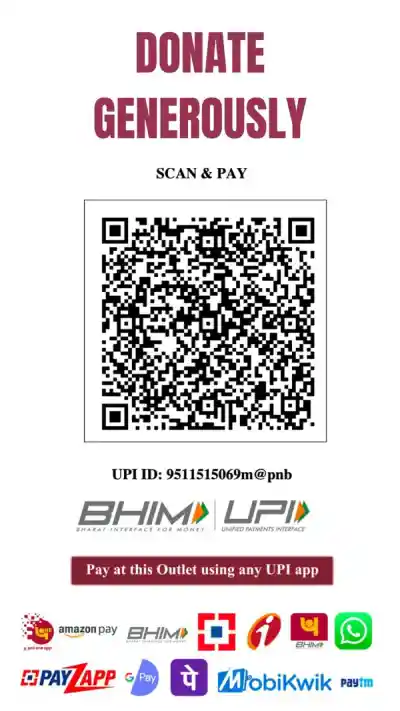Millions of Indians rely on UPI every day for instant payments — and every day a small share of those transfers go to the wrong Virtual Payment Address (VPA). Because UPI payments go through instantly, recovering money sent to the wrong UPI address can feel urgent and daunting.
The good news: there is a clear, tiered process created by the payments system (NPCI) and enforced through banks and the RBI — and, under recent rule changes, genuine mistakes are often reversed faster than before. This article explains the step-by-step actions to take, expected timelines, escalation routes, and practical tips to raise your odds of getting the money back.
Quick summary (what to do in the first hour)
- Do not panic. Collect screenshots of the payment confirmation and lock your phone if there’s any suspicion of fraud.
- Contact the recipient (via the contact details shown in the payment confirmation) and request an immediate refund — many genuine cases are resolved this way.
- Raise an in-app dispute in the UPI/TPAP app you used (Select the exact transaction → “Report an issue” / “Raise dispute”). Most redressal paths start here.
The step-by-step recovery route
1) Contact the receiver directly (fastest, simplest)
If the money landed in a real person’s account (not a scammer’s), a polite request plus transaction details often works. Keep messages polite and save all replies/screenshots — they’re evidence in later escalation. (No formal chargeback can be raised without your bank/app complaint first.)
2) Raise an in-app complaint with the UPI app / TPAP (first formal step)
Every UPI app (TPAP/PSP) provides an option to report a wrong transfer on the transaction screen. Do this immediately and upload:
- Screenshot of transaction confirmation,
- UTR / Transaction ID, date & time, amount, your bank statement excerpt (showing the debit).
NPCI’s dispute redressal process requires complaints to start at the app/TPAP level. Save the complaint/reference number.
3) Contact your bank / PSP (if app route is slow)
Call or visit your bank branch if the app’s response is delayed. Give them the written complaint and ask them to initiate the chargeback process. Keep a receipt of your complaint. Banks are a required escalation step before NPCI in the NPCI tiered flow.
4) Call / register with NPCI (if unresolved)
If the TPAP / bank does not resolve the issue, escalate to NPCI through its Dispute Redressal Mechanism or toll-free helpline 1800-120-1740 (also listed on NPCI’s site). NPCI audits transaction logs and can request beneficiary bank action per the chargeback rules. Register your NPCI complaint and note the reference ID.
5) File an FIR if the recipient is uncooperative or you suspect fraud
If the recipient refuses to return funds or you suspect malicious intent (phishing, fake helpline, account impersonation), file an FIR with your local police/cybercrime cell and include all supporting documents/screenshots. Police can help freeze beneficiary accounts and coordinate with banks for faster recovery in criminal cases — many recent recoveries followed police action.
6) Escalate to the Banking Ombudsman / RBI (final regulator)
If your bank’s reply is unsatisfactory or there is unreasonable delay, you can lodge a complaint with the RBI’s Integrated Ombudsman (RB-IOS) via the RBI CMS portal (cms.rbi.org.in) or the centralized receipt office. The Ombudsman handles deficiency in service complaints and offers a free, formal dispute resolution path. Keep prior complaint references handy — Ombudsman typically asks that you first approach the bank and NPCI.
Timelines — how long should this take?
- In-app / bank action: many TPAPs/banks attempt an early reconciliation immediately; if both sender and receiver are on the same bank, it’s quickest.
- NPCI / chargeback rules: under NPCI’s chargeback framework and recent policy updates, genuine erroneous transfers are expected to be resolved faster — news reports and industry notes (rules implemented around mid-2025) suggest many straightforward cases are being reversed within 24–48 hours when evidence is clear. More complex cases (different banks, suspected fraud, or uncooperative beneficiary) can take longer and may require police/FIR and Ombudsman intervention. Keep following up and use complaint reference numbers when you call.
What information you must provide (and keep)
- Transaction ID / UTR, date & time, amount.
- Your mobile number registered with the bank.
- Screenshots of the payment confirmation and app conversation (if any).
- Bank statement excerpt showing the debit (PDF from online banking is best).
- Copies of all complaint reference numbers (TPAP, bank, NPCI).
Providing full documentation speeds up verification and chargeback processing.
When recovery may fail (and what to do)
- If the recipient claims the money legitimately (and there’s a genuine dispute), recovery may require civil suit or settlement.
- If funds are immediately withdrawn to cash/loaders or moved across many accounts, recovery becomes harder — police/CBCID tracing may be the only route.
- If the sender shared UPI PIN/OTP or banking credentials with a fraudster, banks may treat the transactions as authorised by the customer — stronger legal action and police investigation will be needed. Recent cases show victims who contacted fake helplines lost more funds trying to “recover” money themselves. Never share PINs or OTPs.
Practical prevention tips
- Always verify the receiver’s name that the app shows before entering your UPI PIN.
- For large amounts, send ₹1 first as a test (if feasible).
- Keep beneficiaries updated and delete outdated contacts.
- Never share UPI PIN or OTP with anyone, including people claiming to be from your bank.
- Use app/payment confirmation screenshots and keep a short checklist when sending large transfers.
Bottom line
There is a structured recovery path: contact the recipient, raise an in-app dispute, escalate to your bank, register with NPCI (1800-120-1740 / NPCI complaint portal), involve the police if it looks criminal, and finally approach the RBI Ombudsman if needed. Recent updates to NPCI/RBI rules and bank chargeback procedures have shortened timelines in many clear-cut cases — but speed, documentation, and persistence are the customer’s best allies.
Useful contacts & links (for quick reference)
- NPCI UPI dispute redressal & register complaint — NPCI UPI dispute page. npci.org.in
- NPCI helpline (toll-free) — 1800-120-1740. npci.org.in
- RBI Ombudsman (file via CMS) — cms.rbi.org.in.
Read More: Customs Dept’s Plea to Enforce Expired Bank Guarantees Against Bank of India Dismissed: Bombay HC


